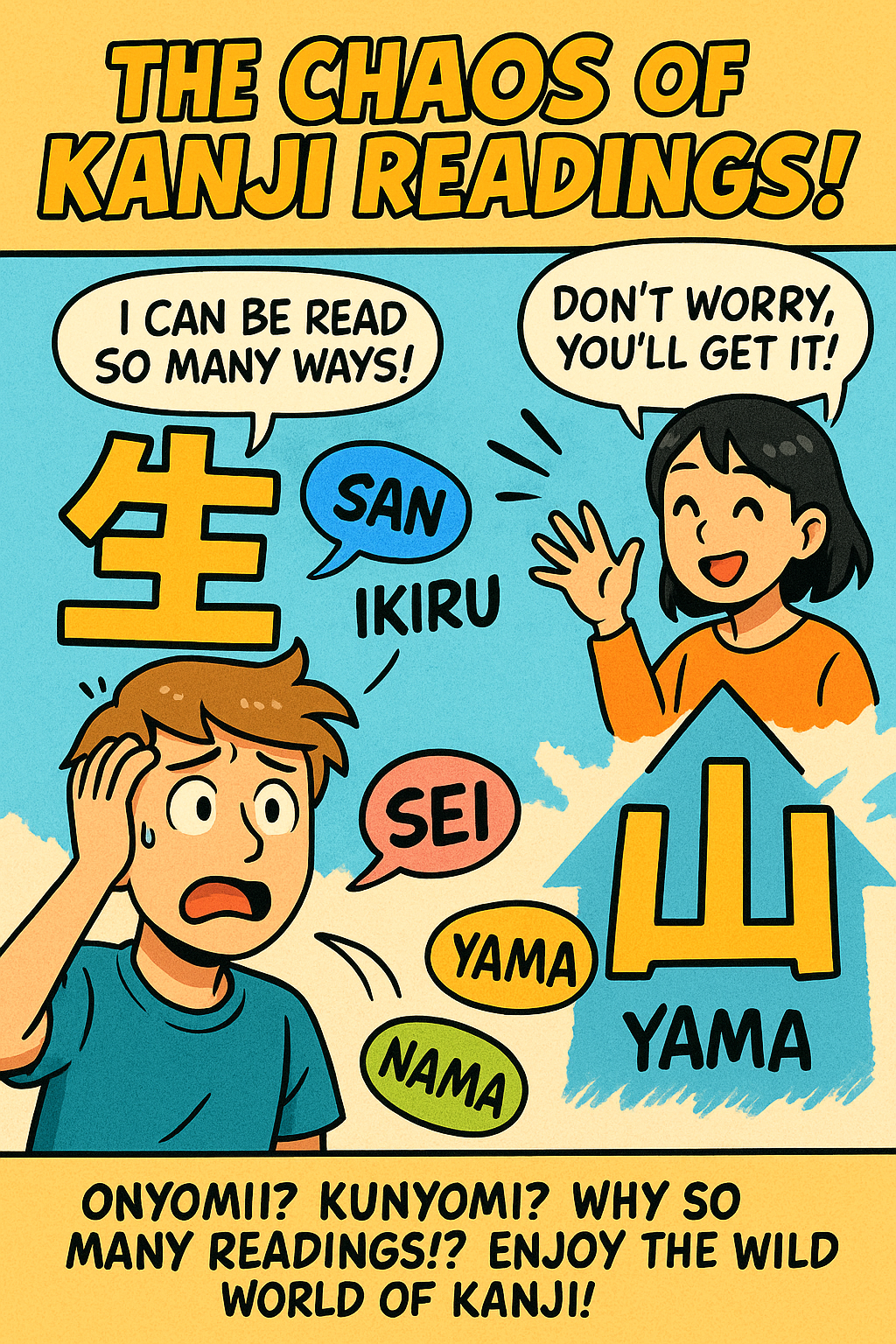
はじめに / Introduction
日本語の漢字には、「音読み」と「訓読み」という2つ以上の読み方があることをご存知ですか?
これは日本語学習者にとって、まさに“カオス”なポイントかもしれません。
Did you know that Japanese kanji usually have two or more readings: "onyomi" and "kunyomi"?
音読みと訓読みの違い / Onyomi and Kunyomi: What’s the Difference?
音読みは、漢字が中国から伝わったときの発音をもとにした読み方です。
訓読みは、日本で独自につけられた読み方です。
例えば、「山」は音読みで「サン」、訓読みで「やま」と読みます。
Onyomi is the reading based on the original Chinese pronunciation when the kanji was introduced to Japan.
Kunyomi is the native Japanese reading assigned to the kanji.
For example, the kanji 「山」 is read as "san" (onyomi) and "yama" (kunyomi).
一つの漢字に複数の読み方 / One Kanji, Many Readings
一つの漢字が、使われる言葉によって読み方が変わることも珍しくありません。
例:
生(なま/いきる/うまれる/せい/しょう)
たとえば、
- 生(なま)ビール
- 生活(せいかつ)
- 誕生(たんじょう)
などなど……!
It’s not uncommon for one kanji to have several readings, depending on the word.
Example:
生 (nama / ikiru / umareru / sei / shou)
For instance:
- 生ビール (nama beer, “draft beer”)
- 生活 (seikatsu, “life/living”)
- 誕生 (tanjou, “birth”)
...and more!
混乱しやすい読み方のトリビア / Fun Facts: Why So Many Readings?
「重箱読み」「湯桶読み」という特別な読み方の組み合わせもあります。
例えば「重箱(じゅうばこ)」は音読み+訓読み、「湯桶(ゆとう)」は訓読み+音読みです。
日本語の奥深さを感じるポイントですね!
There are even special combinations like “juubako-yomi” (onyomi + kunyomi) and “yutou-yomi” (kunyomi + onyomi).
For example, 「重箱」(juubako) uses onyomi + kunyomi, and 「湯桶」(yutou) uses kunyomi + onyomi.
These quirks show just how deep and fascinating Japanese can be!
まとめ / Conclusion
漢字の読み方は最初は難しく感じるかもしれませんが、たくさんの単語や例にふれることで、少しずつ慣れていきます。
混乱を楽しみながら、日本語のカオスな世界を冒険しましょう!
Kanji readings may feel overwhelming at first, but you’ll get used to them as you see more words and examples.
Enjoy the chaos, and have fun exploring the wild world of Japanese kanji!